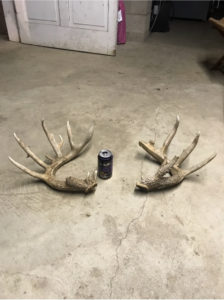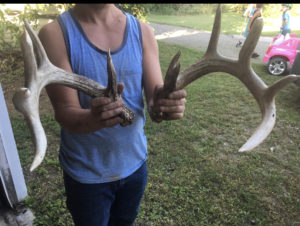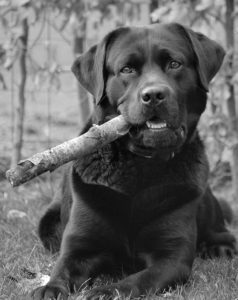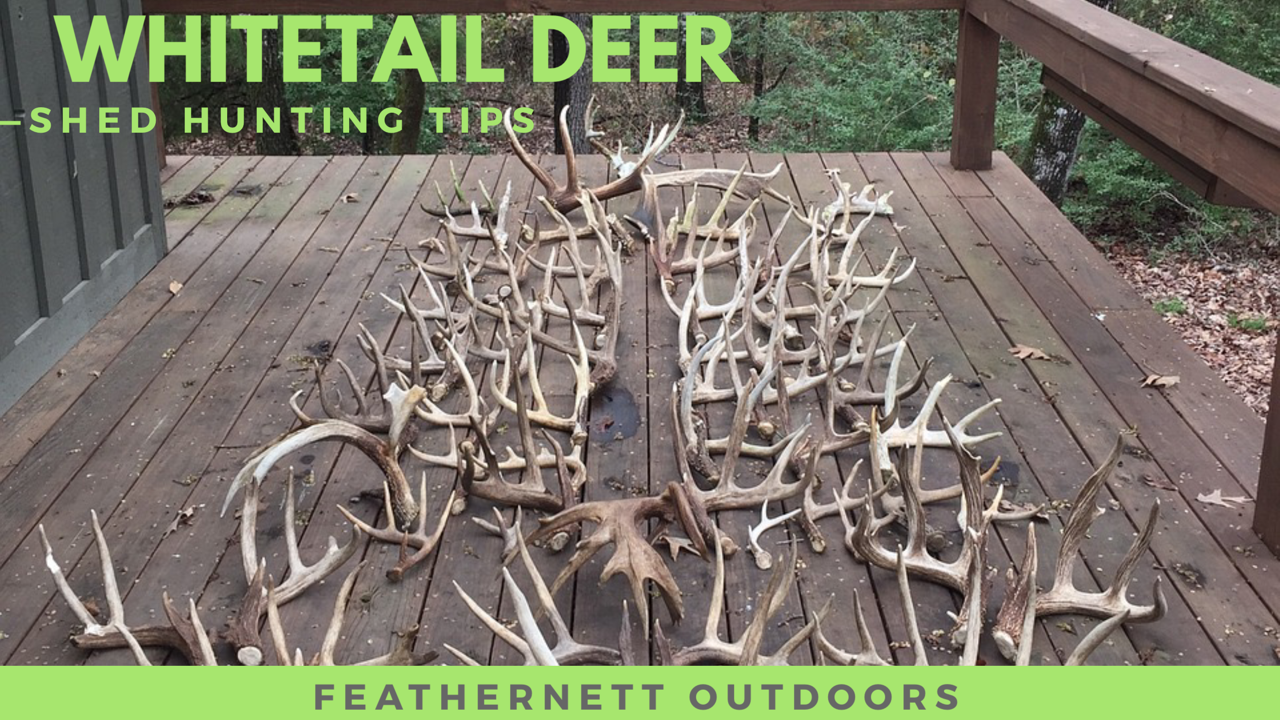Have you ever went Whitetail deer shed Hunting before? Did you struggle to find any sheds? Do you want to learn how to find more sheds? If so this is the perfect article for you! Whitetail Deer Shed Hunting is the perfect way to satisfy any hunting urges in the off-season. You can still get that excitement and still feel like you are chasing mature deer.
Whitetail Deer shed hunting is a growing activity, there are many people now that will go on week-long, guided shed hunts. People are falling in love with the satisfying feeling of finding the hunter prize possession, the ANTLER! Don’t feel like you have to go on a guided hunt to find Whitetail Deer Sheds, because we will show you everything you need to know is here in this post with some free tips.
What Exactly is Whitetail Deer Shed Hunting?
Before we go any further in the post, lets clear up exactly what shed hunting is. Whitetail Deer Shed Hunting is: The Pursuit of finding antlers that have been naturally shed by any antler-bearing mammal. This also includes elk, moose, and Blacktailed Deer.
People searching for these shed antlers would be referred to as “Shed Hunters.”
What are Sheds?
Every Whitetail Buck grows a new set of antlers each spring after they shed there antlers during the winter months. They regrow their antlers mostly in the summer months as they could be growing up to a 1/2 inch per day. Antlers are the fastest growing bones know to modern-day scientist.
Here are some theories of why Whitetail Deer shed there antlers every year. Some people say it is so the bucks blend in with the doe, so predators can’t target the bucks when they are weak and tired in the winter months, after a long and rapid breeding season. Others say that it is just a way for Bucks to revitalize after the long breeding season.

Why Would you shed Hunt?
There are two main reasons to shed Hunt. These are based on your average person and for hunters.
1. Deer and other Big game hunters can gain a lot of valuable information about the animal and its behaviors, by finding its shed antlers. This allows them to put together a hunting strategy in place, that gives them an advantage using this knowledge for the next season. Hunters can also tell the health of the deer based on the shed. If it is perfectly broken off and round then you have a good deer herd. If there is an odd look to it, then the deer is most likely not healthy, injured, or has something else wrong with it.
2. The Joy of the Hunt itself. The reward of gaining a beautiful piece of nature can feel great! Some people will sell the shed antlers to collectors, feature artist, and craftsman. This is also a paying hobby as you can earn yourself a nice little chunk of change, just by taking a walk in the woods to find a nice shed or two.
3. Whitetail Hunters can start to make their hit list for the next season, if they find the sheds to a specific deer then there is a good chance that the deer will live to the next season.
When do Deer Shed there Antlers
Whitetail Deer shed there antlers around the same time every year. Certain weather conditions can effect when the short window of dropping sheds is.
Generally, larger, dominant bucks that do the most breeding drop their antlers earlier in the winter. Younger bucks that do not breed as much in the winter will generally shed their antlers later in the winter. This has a lot to do with bucks expending their testosterone.
The Best time to look for Deer Sheds
Whitetail Deer start shedding their antlers shortly after December, although the majority shed between February and march. A severe winter or other stressful conditions can cause deer to drop their antlers early. By April almost all deer will have shed there antlers.
If you are planning to go shed hunting, march and April will be the best time, as the majority of deer will have shed there antlers. This will give you a better chance at maximizing the amount that you find. You do need to be careful on planning a shed hunt to early, because some states have a shed season. Wildlife agencies just want to minimize the stress on the herd. Think about the safety of your deer herd when you go out. Going on warm sunny days will give the wildlife time to recover from the stressful winter.
Going to late in the year can also hurt your chances of finding sheds as well. Other hunters may have already found the sheds, the spring forage might have grown over the antler, or smaller animals like squirrels might have eaten them for protein. The first big meltdown in February, after it rains is a great time to sheds as they are now uncovered from the snow.

Where to find Sheds
- Bedding-Areas that consist of thick cover where the Deer would spend the majority of its time resting and hiding from predators. When winter hits deer prefer to bed on south-facing slopes, because it has the longest amount of exposure to the sun which allows the deer to stay warm longer and it preserves their energy.
TIP: When Looking in bedding areas, go later in the day as the deer are moving from bedding to food. This doesn’t put as much pressure on the deer.
- Food Sources- Deer Shed normally 2-months after the rut, Bucks are searching for concentrated food sources at this point. It only makes sense to start your search here. This includes food plots, agriculture fields, and orchards. Another good spot to look is in low areas that allow deer to shield themselves from the wind, this can be a gold mine at times.
TIP: When searching in a field for sheds, find a good elevation point that you can see the whole field from. Make sure to bring some good Binoculars. If you have an ATV, you now can use that to your advantage. You can easily grid search fields with your ATV.
- Travel Corridors- This is normally where trails lead to and from a food source back to bedding. When searching on a travel corridor, note any area like a log or fence that forces the deer to jump over. When the deer jumps it can cause the antlers to fall off.
Next Level Shed Hunting
Do you want to find 2x as many sheds, as the normal shed hunter? The average shed hunter finds around 12 sheds per year. I personally think using these advanced tips you will find 2-3x the amount and I think that you will increase the amount of sets that you find as well. So grab your best boots and a nice hunting backpack.
Even though most of the antlers that you find will be with the tactics we went through earlier, deer will wonder and go to unexpected places. Some great spots are in briar thickets, willow stands, and cattail swamps. Most shed hunters will avoid these areas, but it could be the spots that you find the biggest sheds. Smart Bucks will isolate themselves and hide in these areas, so make sure to check there.
Take a dog. This could be a great way to find sheds and not have to do much work for them. Dogs will make a great partner for this hobby, as they have the instinct to smell out objects like bones. I wouldn’t just take any dog out there and just expect them to start running back shed after shed. A hunting dogs such as, Labs, retrievers, and hounds would be ideal for this job.
It is actually fairly easy to teach your dog to retrieve sheds. The best time to teach them is at a very young age, preferably around a couple of months old. There is still hope though!

Training Your Dog to Shed Hunt
- Find a good training system to put your dog through is going to be an important task. Again doing this within the first couple of months of age is ideal.
- Have a reward system for your dog. Anytime your dog does something good, give them a reward. This will quickly teach them to listen to you and do things that they will get rewarded for, like finding a shed.
- Do search and receive training using smaller sheds for them to practice with. Add antler scents to the sheds so that they can familiarize the smell when they are out in the woods.
- NEVER EVER let your dog chew on the shed as this could develop bad habits. You don’t want to find the biggest shed of your life and then have a bunch of bite marks on it.
Conclusion
Now you can use these awesome tips to go out and find some great sheds. The perfect scenario to shed hunting is finding a match set to a giant Buck. Match set are worth a lot more than a single shed. If you find this, then you should feel accomplished. This s also a great activity to do with younger kids or friends that are just getting into the sport, this is a great way to introduce them. I hope that you were able to learn something of value from this article, feel free to comment any questions or anything that you would like to add.
